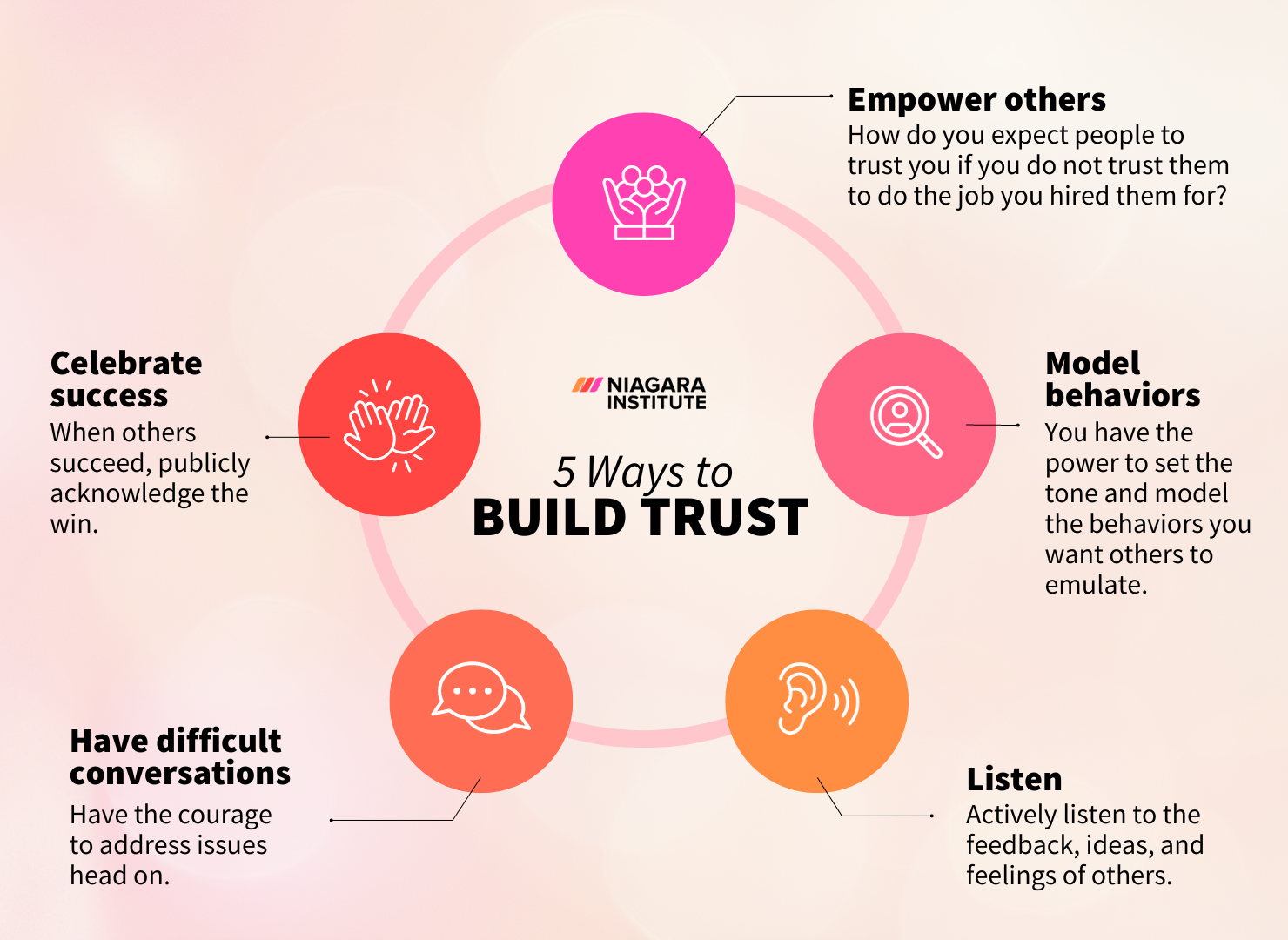8 min read
Quiz: Are You Giving Employees Reasons to Trust and Respect You?
If you haven’t heard the following statistic before, prepare to be surprised. According to a study conducted by Harvard Business Review, it was found...
3 min read
 Michelle Bennett
:
Jan 28, 2021 5:30:00 AM
Michelle Bennett
:
Jan 28, 2021 5:30:00 AM

I remember the excitement of landing my first job out of university. What I learned throughout the interview process for the role, my onboarding, and meeting my new boss to understand the organization left me hopeful for what was ahead. Unfortunately, the excitement that I once had dwindled as I realized the daily grind did not match up to the sunshine and rainbow world that was painted by leaders.
If only they were honest and upfront about the role. Then I could have decided for myself if it was the right job for me. Over time, the trust I once had going into the job eroded, and not too long after, I was looking for my next opportunity.
This experience, unfortunately, feels all too common. We trust those we look up to, and their actions slowly eat away at that trust over time. As a leader, you can intentionally build trust with your employees and give them a different experience. To ensure you’re continually making deposits in their “trust bank,” here are five strategies for building trust with employees, along with a few examples to help illustrate how to put them into practice.

Does anything say “I don’t trust you” as obviously as a micromanaging boss? How do you expect your employees to trust you if you do not trust them to do the job you hired them for? Empowering your employees is not only an excellent way to build trust, but it has also been linked to higher engagement. Both of which lead to greater productivity, motivation, and employee retention.
The next time you give an employee a task, set clear expectations and boundaries for them to operate in. Put the onus on the employee to reach out to you if they need help or clarity. Then arrange a status update meeting a week later and let them go take on the task as they see fit. It might not be the way you would do it, and that’s okay.
Leaders set the tone and influence acceptable behaviors on the team. If you’re undermining the leadership at your organization by talking badly about them or the direction they’re taking the organization in, chances are, your team will pick up on this and behave similarly towards organizational leaders, and maybe even you. If you want your team to trust you, then you need to lead by example.
The next time you and your team leave a meeting with senior leaders, and the direction may not be crystal clear, be the one to step up and acknowledge the gaps in understanding and what your plans are to seek out clarity. With clarity comes trust. If your employees see you actively seeking out information you need and not jumping to your conclusions, there is a much better chance they will do the same in the future.
When leaders take the time to listen to employees' feedback, ideas, and feelings and incorporate those discussions into their decisions, employees feel heard, and so does their trust. Additionally, employees who feel their voice is heard say they are 4.6 times more likely to feel empowered to perform their best work.
Why is listening important? It’s important because, as leaders, we don’t have all the answers. So, the next time you meet one-on-one with your employees, encourage them to share their thoughts and feedback and intentionally listen to what they have to say. Resist the temptation to jump in and speak. Let them have the floor. You may be surprised at what you learn and the new opportunities that you may have missed.
Having the courage to address issues when they arise and not avoid difficult conversations builds trust. Believe it or not, in most cases, people would rather know where they went wrong, so they can fix the problem than wait until it is out of control and the consequences are much worse than they should have been. If your employees know where they stand with you, it builds trust, as they know, you will have conversations with them when it is needed.
The next time you need to give constructive feedback, address it at the moment by speaking with your employee away from their peers and be direct but show tact. Then work with the employee to develop a strategy to mitigate the need to have the same conversation in the future. You’ll build trust by being honest and showing that you are invested in helping them.
Employees feel supported through your actions, such as using your formal authority to remove roadblocks, coaching them on how to approach a situation, and encouraging them when they’re feeling overwhelmed. These actions show you’re invested in their success, which builds trust. And when they do succeed, you publicly acknowledge them, not conversely, taking credit for their work.
The easiest way to demonstrate that you want them to succeed is to ask them where they could use your support. Or if you see an employee struggling to keep up, roll up your sleeves and take on a task they give you.
Being proactive and intentional about building trust with your employees is a much easier route to go than trying to restore trust once it is broken. Also, if you have been working to build trust and mess up (because we all do, we’re human), you will likely have a more forgiving employee standing beside you to help and come back stronger.

8 min read
If you haven’t heard the following statistic before, prepare to be surprised. According to a study conducted by Harvard Business Review, it was found...

6 min read
Whether you’re praising a peer for a job well done or guiding an employee on a project that’s faltering, feedback is how those around you learn and...

6 min read
In leadership, every word you say, the action you take, and the decision you make has the potential to impress your employees. Granted, there are...